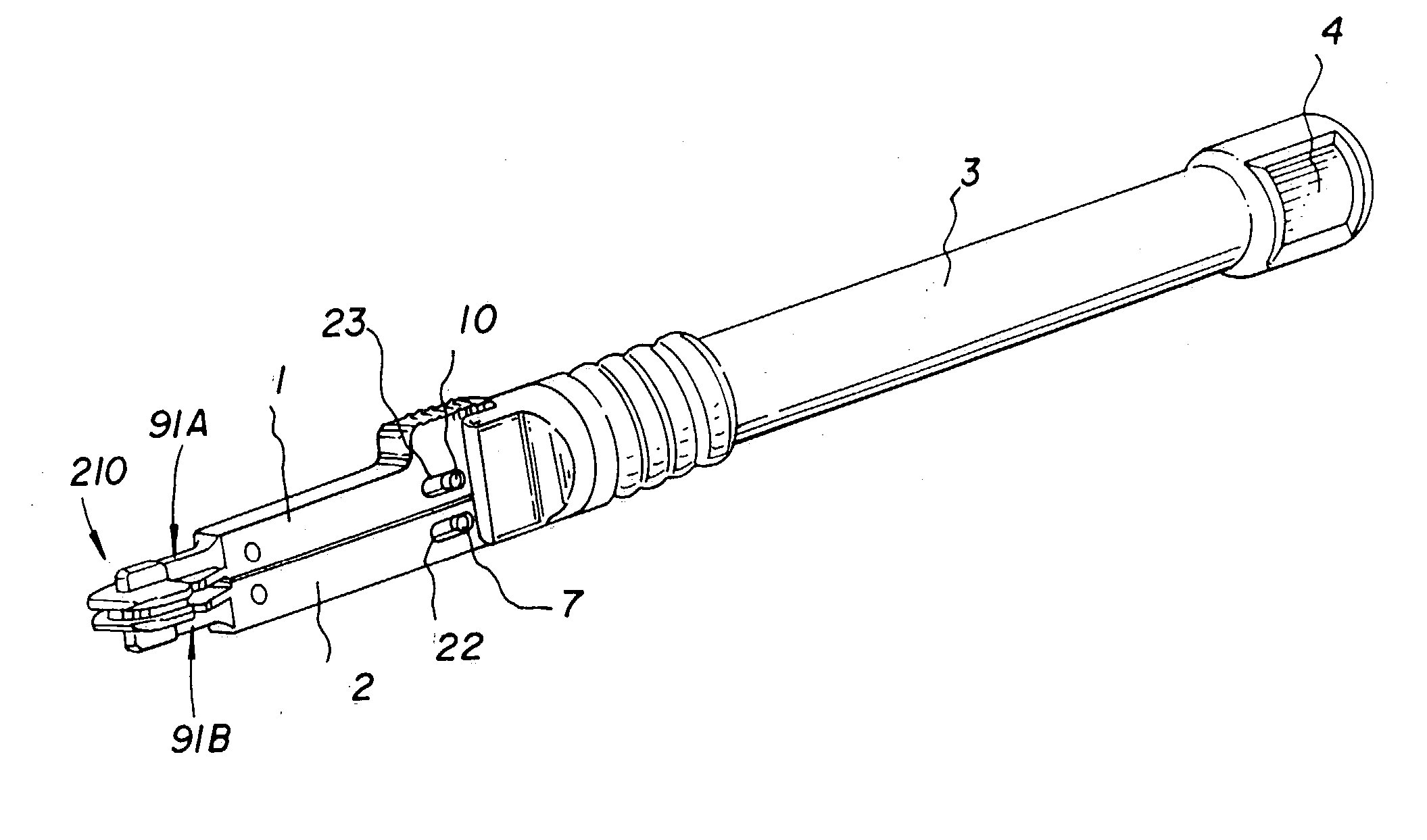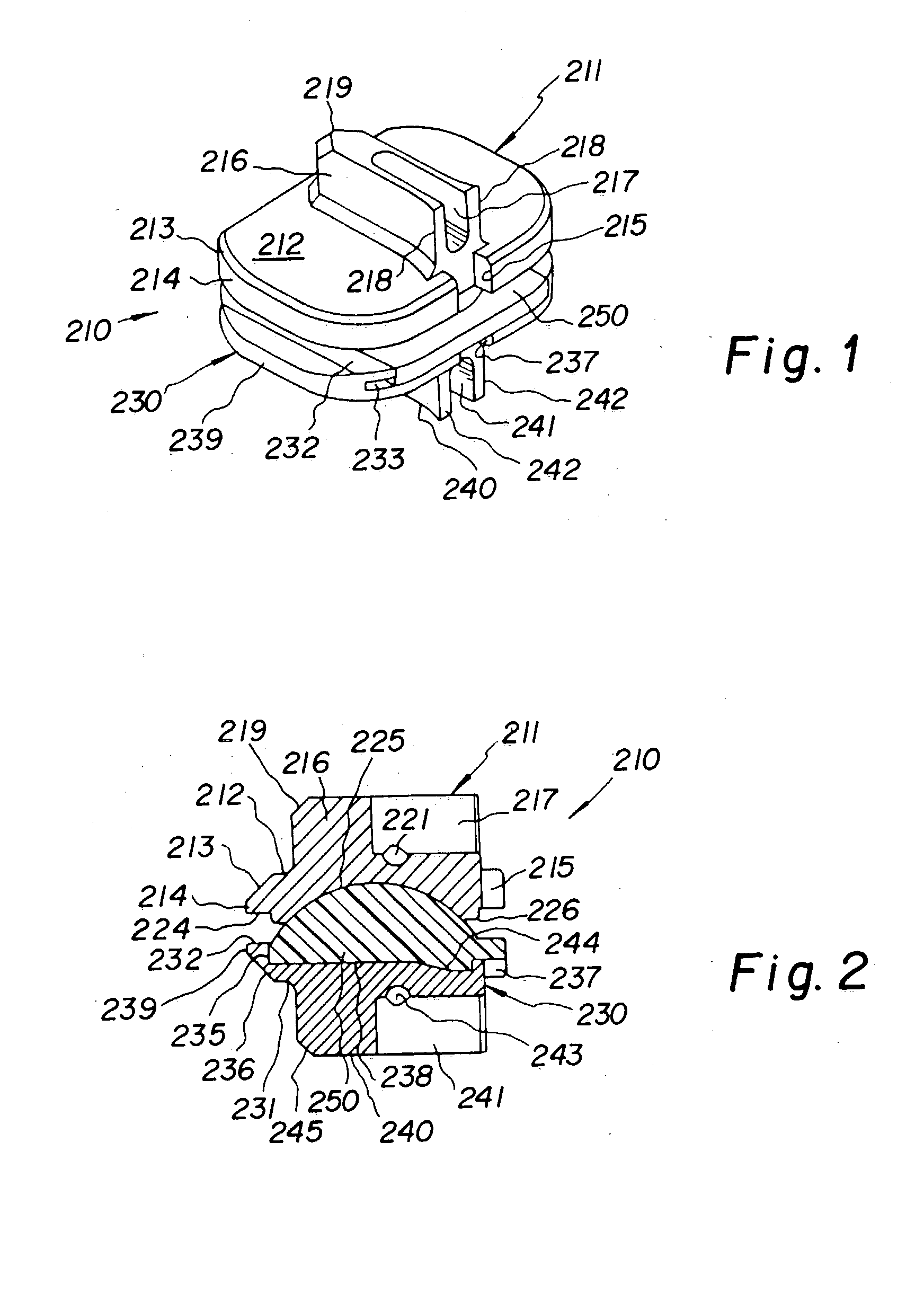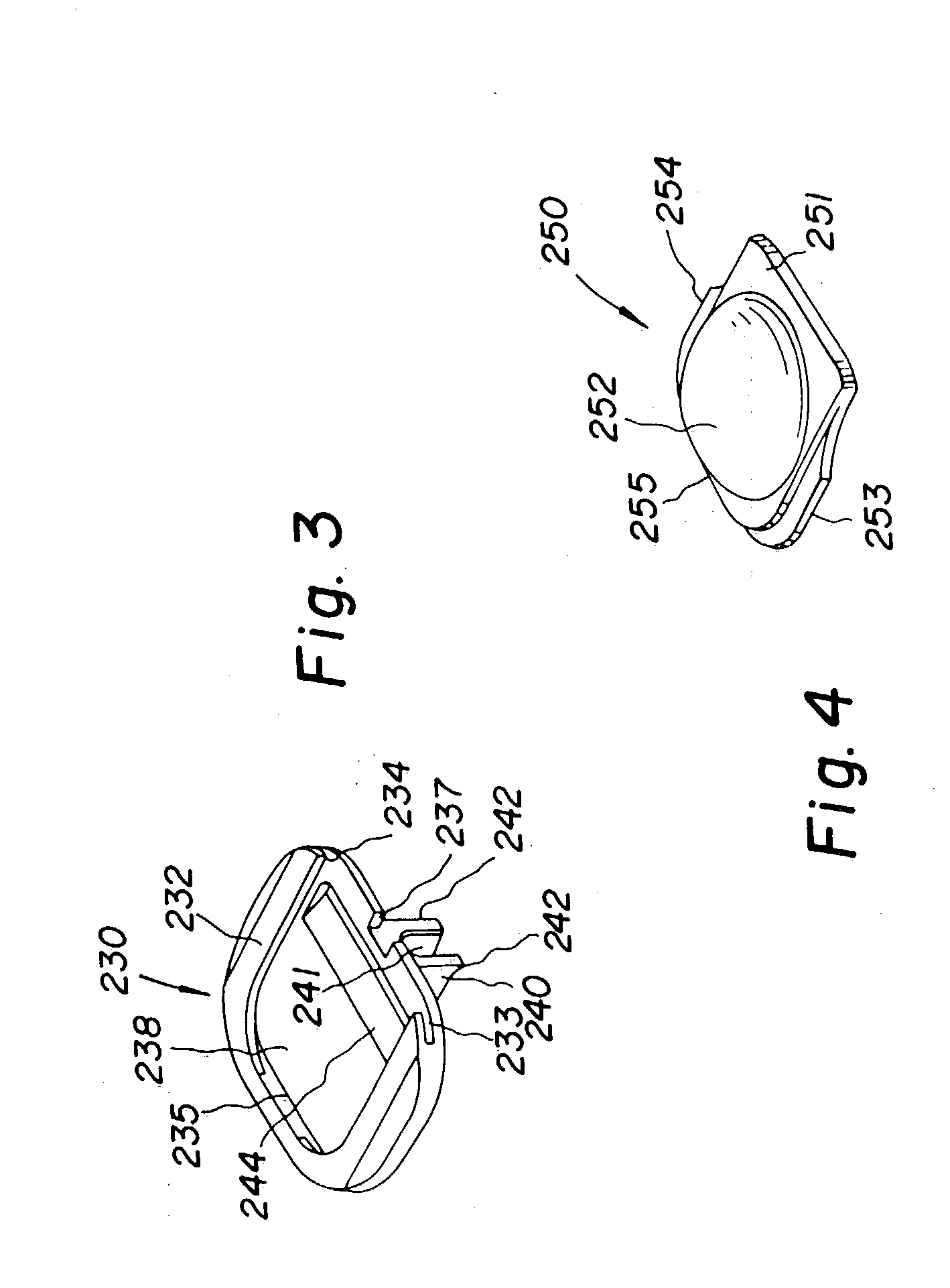Instruments and method for inserting an intervertebral implant
a technology of instruments and methods, applied in the field of intervertebral implants, can solve the problems of extreme delicate area in which to insert an intervertebral implant, and achieve the effect of stabilizing the implan
- Summary
- Abstract
- Description
- Claims
- Application Information
AI Technical Summary
Benefits of technology
Problems solved by technology
Method used
Image
Examples
first embodiment
[0069]FIGS. 10-16 show an insertion instrument.
[0070] This crossed linkage instrument insertion instrument includes a body 3 having a control knob 4 at the rear end thereof and arms 1 and 2 at the forward end thereof. There is shown forward of these arms 1 and 2, the arms 91A and 91B of the insertion instrument which is shown in FIGS. 6, 7 and 8, with an assembled implant 210 being held thereby.
[0071]FIG. 11, like FIG. 10, shows the insertion instrument with the arms 1 and 2 in the closed position holding the implant 210. Referring to FIG. 11 which shows the insertion instrument in the closed position, as well as FIGS. 14 and 15 which show the insertion instrument in the opened position, it is seen that the arms 1 and 2 are operated to move towards and away from each other, or more specifically, to raise the arm 1 while the arm 2 is fixed with respect to the body 3. The mechanism for raising the arm 1 includes crossed linkage comprising a first link 5 having a pivot pin 6 at one en...
embodiment 25
[0073]FIGS. 17 and 18 illustrate another embodiment 25 of a crossed linkage insertion instrument. This insertion instrument is similar to the insertion instrument of FIGS. 10-16 with the exception of a circular knob 26 at the right hand end thereof and the thread engaging mechanism which is shown in greater detail in FIG. 18. Thus, in FIGS. 17 and 18, elements which are identical to those shown in FIGS. 10-16 are represented by the same numerals.
[0074] Referring to FIG. 18, in this case the bevel washer 14 is replaced by a tapered washer or nut 27. To the left of nut 27, the taper frictionally engages a conical wall 28 formed on the right hand end of lower arm 2. Thus, when the threaded rod 15 is caused to move to the left by the turning of knob 26, the conical portion of nut 27 frictionally engages the conical surface 28 which prevents the nut 27 from rotating, whereby the threaded rod 15 is threaded through the nut 27 to move the sleeve 13 and hence the link 11 to the left to move...
embodiment 30
[0075]FIGS. 19-22 show another embodiment 30 of an insertion instrument. This embodiment is extremely simple and hence economical. Basically, this insertion instrument 30 comprises a plastic body 31 having a front part 32 formed integrally with body 31 and comprising upper and lower arms 33 and 34. In FIG. 19, insertion instrument 30 is shown in its closed position holding an implant 210.
[0076]FIGS. 20 and 21 illustrate the front portion 32 of the insertion instrument 30. FIG. 20 shows a thumb slide 35 and a pin 36 while in FIG. 21 part of the side wall and the thumb slide 35 are removed, thus revealing the pin 38 which would be attached to the thumb slide 35 and the rod 37 which engages a pin 36. The two arms 33 and 34 are normally urged resiliently towards each other to a closed implant holding position. However, referring to FIG. 22 by moving the rod 37 to the left, the pin 36 rides out of its recess 39 and urges the arms 33 and 34 apart, thus opening the insertion instrument.
[0...
PUM
| Property | Measurement | Unit |
|---|---|---|
| length | aaaaa | aaaaa |
| width | aaaaa | aaaaa |
| height | aaaaa | aaaaa |
Abstract
Description
Claims
Application Information
 Login to View More
Login to View More - R&D
- Intellectual Property
- Life Sciences
- Materials
- Tech Scout
- Unparalleled Data Quality
- Higher Quality Content
- 60% Fewer Hallucinations
Browse by: Latest US Patents, China's latest patents, Technical Efficacy Thesaurus, Application Domain, Technology Topic, Popular Technical Reports.
© 2025 PatSnap. All rights reserved.Legal|Privacy policy|Modern Slavery Act Transparency Statement|Sitemap|About US| Contact US: help@patsnap.com



